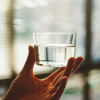In situations when immediate medical assistance is unavailable, knowing basic, first aid can be life-saving. While nothing replaces professional medical care, certain first aid techniques can stabilise the condition until help arrives. This article serves as a guide on first aid intervention using common items that might be handy.
Cuts and scrapes
If someone near you injures himself/herself badly — resulting in a deep cut — ensure both your and the victim's safety first. If safe, use a clean cloth or bandages from your first aid kit to apply direct pressure to the wound to control bleeding.
If bottled water is available, pour it over the wound to clean it as best as possible. Avoid using dirty water as it can introduce bacteria. Then cover the wound with a clean cloth or sterile dressing to protect it from further contamination.
Sprains and strains
If you or your friend sprains an ankle, the first step that should be taken is to get the person seated and elevate their ankle. If possible, get an ice compress and apply it to the swollen area to reduce swelling and numb the pain. Wrap the ankle lightly with an elastic bandage and ensure it is snug but not too tight.
Handling burns
If you are affected with burn injuries, quickly move to a safe location, then cool the burn under cool running water. Do not use ice as it can cause further tissue damage. Use a sterile, non-fluffy dressing or cloth to cover the area, securing it with a bandage that does not stick to the burn. Burns can worsen without proper treatment. Seek medical help as soon as possible.
Responding to choking
Choking incidents often go unnoticed until critical. If the person is unable to talk, cough, or breathe, they need immediate help. In this case, the Heimlich Manoeuvre might be of help.
To help the person, stand behind them and place your arms around their waist. Clench a fist and place it above their navel, grabbing it with your other hand. Thrust inward and upward until the object is expelled.
Heat exhaustion and dehydration
Long hours outdoors, especially in hot weather, can lead to heat-related illnesses. Watch for signs such as headache, dizziness, muscle cramps, nausea, and fainting. Move the person to a shaded or cooler area. Remove any excess clothing to help cool them down. If the person is conscious and can swallow, give them water or a sports drink to rehydrate.








Comments